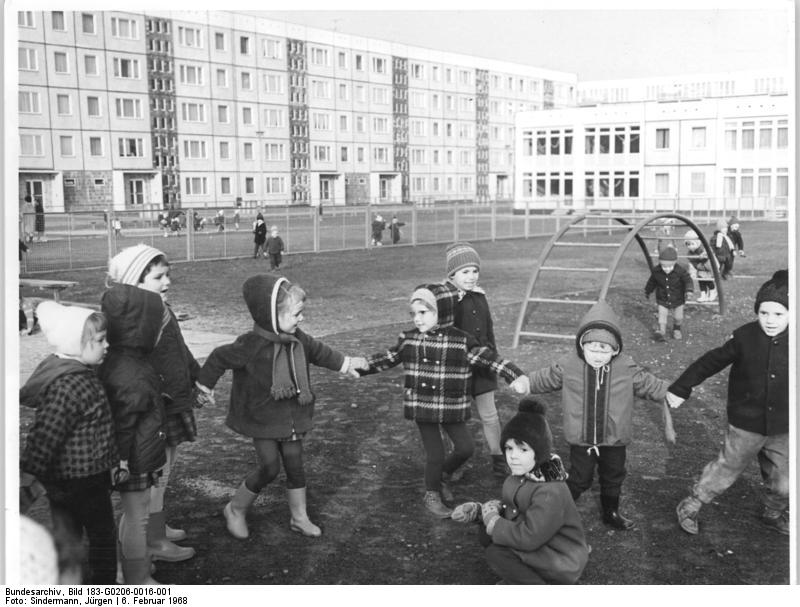|
|
Rostock, Germany, Europe |
|
|
|
|
|
|

source: Jürgen Sindermann, 1968
(wikimedia)
|
Introduction
Rostock is a large city at the northern coast line of East Germany. During the GDR period several large urban districts were developed that can be seen as New Towns. The new districts are designed according to the new direction in planning at the end of the sixties and the beginning of the seventies. The government realized that most of the ideal New Towns were not realized as they were planned. The striving for a socialist city with elaborated facilities and representative architecture in the soviet Socialist-Realist style had ended. Since the sixties the government tried to make more realistic plans, with cheap houses and employment for everyone. Every family should have a good equipped apartment at one's disposal.
Urban plan and design
Rostock was largely destroyed during WWII by bombardments on the National Socialist weapon industry of Rostock. After the war the GDR government restored the harbour buildings, docks and engines to make Rostock the largest overseas harbour of the GDR. In 1960 the first freight was offloaded. The government also planned a residential town for 60,000 inhabitants. The first buildings were generally four to five-storey high 'Plattenbau' slabs of type P1.
In 1971 the Chief architect Wolfgang Urbanski and Rudolf Lasch, Erich Kaufmann and Peter Baumbach designed a new town planning scheme for the space between Rostock and Warnemünde. The goal was to put an end to the rigid housing complexes of the sixties. The urban plan divided the 400 hectare large area for 130,000 inhabitants in six quarters: Lütten-Klein (1971), Evershagen (1971-1974), Lichtenhagen (1974-1976), Smarl en Gross-Klein (1976-1979) and Lütten-Klein-Mitte. Especially in Lütten-Klein Urbanski and his companions tried to make a more private and intimate atmosphere in human scale.
Present situation
Nowadays the town counts a population of 130,000 people.
source: Saskia Hulskes |
|
2008 - 2024 disclaimer
|

